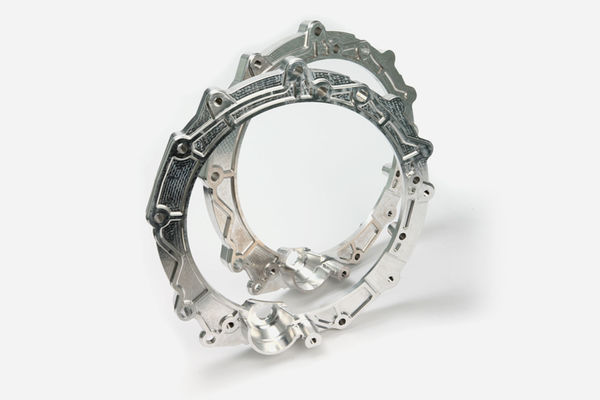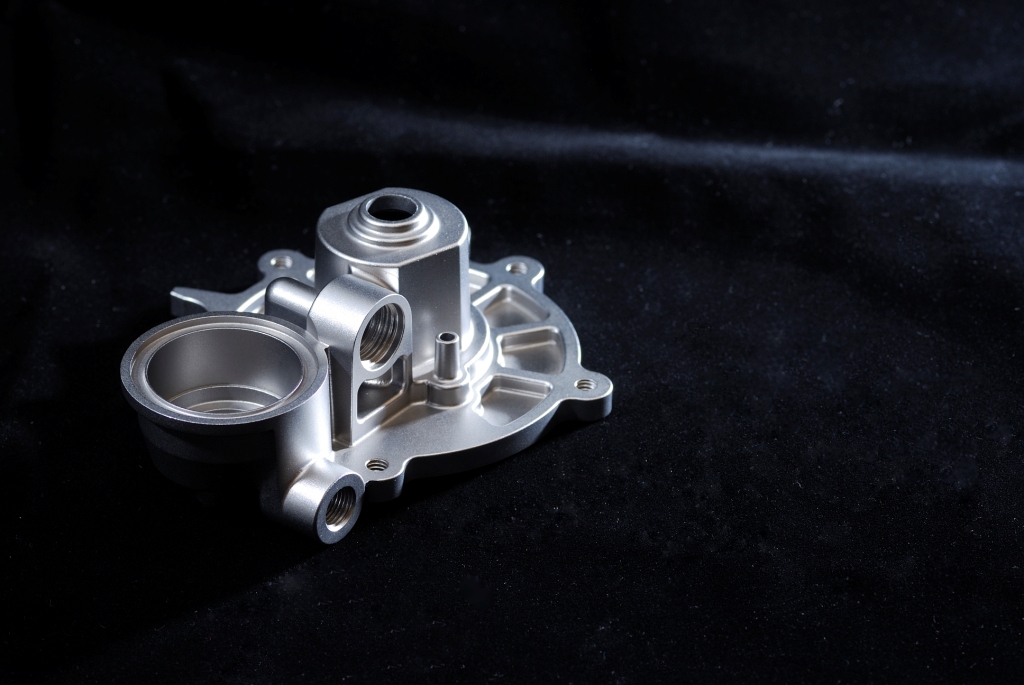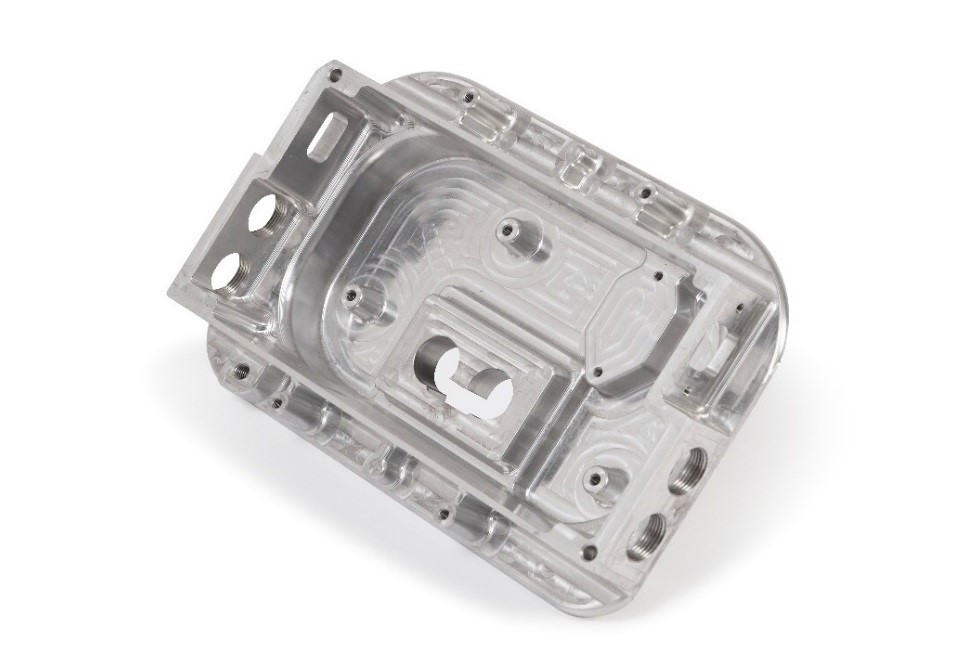Metal CNC machining involves the precise removal of material from metal workpieces using computer numerical control (CNC) machines. This technology allows engineers and industrial designers to create complex metal parts with high precision. From prototypes to small production runs, metal CNC machining offers a versatile solution for crafting metal components for various applications.
At ARRK, in addition to plastic machining, we excel in metal machining as well. Whether you need a single prototype or a small production run of a few hundred pieces, we offer a one-stop solution. This page will introduce the features of metal cutting machining.




ARRK has a wide range of machining experience in various fields, including automotive parts, aerospace components, medical devices, and robotics components.
Welcome to the world of precision engineering and innovation at ARRK. Our expertise goes beyond plastic machining; we are masters of metal machining as well. From crafting single-piece prototypes to managing small-scale production runs of several hundred units, our capabilities are unparalleled. On this page, we unveil the remarkable realm of metal cutting machining.
ARRK proudly showcases a diverse portfolio of machining accomplishments, ranging from intricate automotive parts to cutting-edge aerospace components, life-saving medical devices, and cutting-edge robotics parts.
Unveiling Metal Cutting Machining
Metal cutting machining, an intricate process of material removal from metal blocks or rods through specialized cutting tools, is our forte. Depending on the product’s shape and cutting specifications, an array of tools, including drills, end mills, and mills, are precisely employed to gradually shape the end product.
While metal cutting has a rich historical backdrop, recent technological advancements have shifted the landscape towards the utilization of automated machining centers and NC lathes, guided by meticulously programmed instructions. This transition has paved the way for heightened precision and efficiency, surpassing manual operations achieved through conventional milling or turning machines.
【Pinnacle Attributes of Metal Cutting】
The hallmarks of metal cutting lie in its unparalleled precision and remarkable versatility.
In the expansive realm of metal processing, methodologies like press forming, forging, and sheet metal processing reign. However, metal cutting machining emerges as the vanguard, consistently upholding the banner of impeccable precision.
Furthermore, metal cutting boasts its adaptability, facilitating the processing of a myriad of metals. Be it robust or malleable metals, fine-tuning cutting tools and processing conditions seamlessly enable the machining of diverse materials. Consequently, the endeavor to fabricate products with distinct materials but identical shapes for testing objectives is effortlessly realized through the prowess of metal cutting.
【A Panorama of Suitable Cutting Metals】
The spectrum of metals amenable to cutting encompasses a wide array. They are broadly categorized into “iron-based,” “stainless steel-based,” “aluminum-based,” “copper-brass-based,” and “other” classifications.
【steel-based】
steel-based metals segregate into heat-treatable and non-heat-treatable variants. Within the ambit of iron-based materials, a gamut of hardness levels and processing attributes abound. Notable instances comprise “pure iron” with low carbon content and inherent softness, “mild steel” exemplars like SS400 and S10C, “carbon steel” incarnations such as S45C and SCM, and the realm of “alloy tool steel” typified by SKD and SKT. Every one of these metals is amenable to cutting techniques.
Certain materials within the domains of carbon steel and alloy tool steel undergo quenching, a rigorous heat treatment process. Given the intricacies of machining after quenching, cutting is often employed post-quenching. Occasional exceptions do exist where cutting occurs prior to quenching, albeit as an atypical practice.
Cast iron-based materials also fall within the purview of machinable entities. For instance, in the domain of automotive engine components, initial casting of a rough shape is succeeded by post-processing, focusing solely on precision-critical facets. Prudent caution is advised, particularly with brittle cast iron varieties like white cast iron, unsuitable for post-machining ventures.
【Stainless Steel-based】
Stainless steel substrates flaunt elevated hardness and tenacity compared to their iron-based counterparts, consequently intensifying the complexities of cutting. These metals, due to their intricate nature, bear the label of “difficult-to-cut” materials. Resultantly, tool wear witnesses a spike in these conditions, impacting the longevity of the tools. Prominent stainless steel selections encompass SUS304 and SUS430. Augmenting machinability, SUS303 and SUS430F, enriched with sulfur and phosphorus additives, take the center stage. Although these additives enhance machinability, they correspondingly reduce corrosion resistance.
Diversity thrives within aluminum-based materials, with a prominent focus on six categories:
– A1000 series: Characterized by pure aluminum, boasting over 99% purity
– A2000 series: Distinguished by high-strength duralumin with limited corrosion resistance
– A5000 series: Epitomizing common aluminum alloy, enriched with magnesium for a balanced profile
– A6000 series: Spotlighting high-strength aluminum alloy, incorporating silicon and magnesium for reinforcement
– A7000 series: Embodies the pinnacle of aluminum alloy, with A7075, renowned as super duralumin
– ADC series: Tailored for die-casting applications
Although aluminum generally aligns with commendable machinability, it’s imperative to acknowledge the potential for tool adhesion during the cutting process. Vigilant chip evacuation strategies become indispensable to mitigate the impact on precision and aesthetics.
【Copper-Brass-base】
Copper and its brass derivatives champion excellent machinability. However, their soft and malleable nature gives rise to challenges such as burr formation and chip-induced scratches. While the act of machining per se doesn’t present an insurmountable obstacle, attaining a pristine finish mandates skilled execution.
【Other Metals】
The realm of cutting extends its dominion to encompass metals like titanium and Inconel. However, the immense hardness of these metals introduces formidable hurdles to the cutting process. Prudent consultation becomes a requisite precursor before embarking on the endeavor of cutting materials like titanium and Inconel.
The echelons of suitability extend further to encompass materials like zinc alloy ZDC2 and magnesium, apt for die-casting endeavors.
【Exemplifying Metal Cutting Techniques】
For materials culled from blocks, the bedrock of machining centers is most commonly employed. Conversely, materials extracted from rod-shaped entities find their processing ally in the form of NC lathes.
In scenarios where shape complexity reigns supreme, the fusion of machining centers and NC lathes emerges as a winning strategy. Recent epochs have borne witness to the surging popularity of 4-axis and 5-axis machines. These avant-garde marvels embrace intricate movements, a boon particularly when sculpting intricate 3D forms.
【Machining Centers】
Machining centers espouse the practice of affixing block-shaped materials onto a table. These materials undergo metamorphosis via the orchestrated dance of rotating tools like drills and end mills. The moniker “machining centers” is bestowed upon machines operating autonomously via NC programs, with a distinction from manually-driven counterparts colloquially termed as general-purpose mills. In the contemporary milieu, machining centers reign supreme.
Automated tool changing bestows machining centers with the power of seamless transition between tools, a feature that underpins uninterrupted processing with the optimal tool at any given juncture.
【NC Lathes】
NC lathes, the stalwarts of rod-shaped material processing, center around clamping rod-like entities to a chuck. Tools, affectionately christened “bits,” orchestrate the symphony of material reduction as the substrate twirls. Distinct from the dynamic rotation of tools in machining centers, tools remain static in NC lathes. These lathes take center stage in shaping cylindrical forms, such as shafts and flanges.
Similar to their machining center counterparts, NC lathes come endowed with tool-changing functionalities. This dimension of flexibility ensures that every processing endeavor is equipped with the optimal tool configuration.
【4-axis and 5-axis Machines】
The revolutionary leaps into the era of 4-axis and 5-axis machines entail the integration of rotational axes into the familiar trio of horizontal, vertical, and depth movements.
This evolution translates into unparalleled tool orientation flexibility, with variations in rotational axes’ presence and alignment catalyzing the creation of intricate 3D shapes. A task that hitherto demanded multiple machining stages can now be consummated in one fell swoop, epitomizing efficiency and precision.
【Precision Par Excellence】
The twin pillars of machining centers and NC lathes bestow a rarefied realm of precision upon the end product. Hole dimensions find their champion in machining centers, whereas external dimensions embrace perfection through the conduit of NC lathes. Scenarios necessitating precision within the confines of 1/1000 mm are delicately navigated by leveraging temperature-controlled environments to mitigate material expansion.
【Navigating Complexity with Finesse】
Metal cutting machining harmonizes with intricate geometries through the adroit selection of cutting tools attuned to the product’s contour. This dexterity not only underscores the realm of intricate shapes but also unveils the potential for multifaceted replication. However, it’s imperative to acknowledge that certain shapes might present challenges. Elaboration on these shape-centric intricacies awaits in the subsequent section.
Furthermore, the avenue of post-processing stands open for cast or formed parts. This avenue facilitates precision enhancement for surfaces and hole dimensions, culminating in an assemblage that manifests the pinnacle of precision.
【The Metal Melting Pot of Diversity】
The trajectory of cutting encompasses a kaleidoscope of metal genres. The flexibility to metamorphose through diverse materials is orchestrated by manipulating cutting tools and processing parameters. However, a word of caution is prudent—expertise amongst manufacturers is anything but uniform. While some excel in the art of sculpting malleable aluminum alloys, others emerge triumphant in the realm of daunting materials like titanium and Inconel. The architect of success is the selection of a manufacturer aligned with the unique material demands, thus ensconcing the twin tenets of cost-effectiveness and quality.
【Small-Batch Proficiency】
The zenith of cutting machining lies in its prowess within the arena of small-batch production. Armed with a handful of block materials and a repertoire of cutting tools, the absence of dedicated molds proves no hindrance. Cutting effortlessly navigates the terrain of single-piece prototyping and burgeons into small-scale production with enviable aplomb.
However, the bouquet of cutting machining’s advantages doesn’t preclude a contemplation of its challenges:
【Bridging Tool Reach Constraints】
Cutting machining is beholden to the limitations of tool reach, precluding its dominion over areas beyond the grasp of cutting tools. Inner sanctums within shapes, reminiscent of bottles, present a unique challenge. The spatial constraints of cutting tools render their conquest an insurmountable quest.
Moreover, the realm of machining square holes stands riddled with complexities. Tool geometry inscribes rounded edges onto corners, necessitating a strategic response in the form of counterboring or electrical discharge machining. It’s vital to appraise the latter’s propensity to propel costs skyward.
Further challenges loom in the domain of deep, slender grooves. The dainty diameters of cutting tools intricately dance within these confines, but this grace belies the escalating costs that trail in their wake, warranting vigilant foresight
【Navigating Extensive Machining Costs】
The pursuit of intricate shapes akin to cups mandates an intensive material eradication process, fueled by the quest to chisel away superfluous material cocooned within block stock. The protracted temporal odyssey tethered to extensive material removal conspires to escalate costs. Strategically orchestrating the territories destined for machining stands as a testament to prudent cost containment.
【A Dilemma in Mass Production】
While the overture of cutting machining abolishes the necessity for molds and unfurls a tapestry of promising initial costs, the narrative of prolonged processing durations sets it on a divergent course from methods steeped in mold utilization. This temporal disjunction paints cutting machining as the beacon for small-batch production, juxtaposed against the medium-to-high production tapestry woven by mold-based counterparts.
In the pursuit of unveiling the intricacies of cutting machining at ARRK, here’s a compendium of frequently posed questions:
Q:Can the likes of ADC12 or ZDC2, die-cast materials, find manifestation through single-piece machining?
A:A resounding affirmation. Die-cast materials can indeed be hewn into existence via the conduit of cutting machining, clothed in block forms.
Q:Does the gamut of post-processing extend to die-cast products originating from external sources?
A:A definitive yes. The post-processing expertise extends its hand of transformation to embrace parts birthed by external entities.
Q:Is the arena of undercut shapes adroitly navigated by your prowess?
A:The capabilities of our 4-axis and 5-axis machines extend to accommodate the demands of undercut shapes, a testament to our technical finesse.
Q:Does the ARRK arsenal include secondary processes such as anodizing, plating, or painting?
A:At ARRK, the spectrum of solutions fans out to encompass a comprehensive array of secondary processes, with surface treatment taking center stage.
For engineers and industrial designers who harbor the fervor to breathe life into their prototypes, ARRK’s metal CNC machining prowess unfurls a tapestry laden with precision, versatility, and an unparalleled repository of material mastery. Rest assured, your designs will materialize in resplendent reality, infused with an aura of quality and efficiency that only ARRK can deliver.

